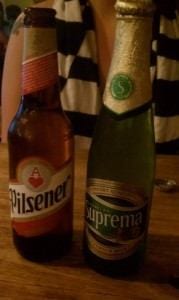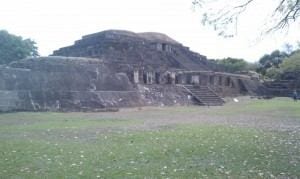Travel Tips
El Salvador: Five Days in ‘The 30-Minute Country’
Day Two: Elsewhere in San Salvador
Many museums and tourist sites in El Salvador take a lunch/siesta break from noon – 2 pm, so you’ll need to do your research and plan accordingly. The best museum for starting your El Salvador experience is El Museo de la Palabra Y Los Imagen, aka The Museum of Words and Images. The name might not sound terribly specific, but the concept is well-executed. The museum features rotating exhibits that use everything from newspaper clippings to old photographs to kids’ books to show the history of El Salvador. Exhibits are designed to give an overview on some of the country’s most enduring stories, including the life of Archbishop Romero and the Civil War, which ended in 1992. There’s also a wonderful permanent exhibit about Radio Venceremos, an independent underground radio station that served the leftists during the Civil War – and whose founder just so happens to be the founder of the Museum. His name is Santiago, and he’s almost always in the building saying hello to guests. Also on the museum front, check out the National Museum of Anthropology and the Museum of Modern Art – they’re down the street from each other, and they’re also painfully cheap – tickets will run you a dollar or two at each.
 If you want to eat where the locals eat, or maybe enjoy a couple of drinks on a night out, head to La Ventana on Plaza Palestina in the upscale Colonia Escalon neighborhood. The chill restaurant plays American and European pop music, mostly from the 1990s (expect a lot of U2). The menu is a mix of pasta dishes, salads, and sandwiches, with a surprisingly good percentage of vegetarian options. Finish off with local beers or some Pisco sours.
If you want to eat where the locals eat, or maybe enjoy a couple of drinks on a night out, head to La Ventana on Plaza Palestina in the upscale Colonia Escalon neighborhood. The chill restaurant plays American and European pop music, mostly from the 1990s (expect a lot of U2). The menu is a mix of pasta dishes, salads, and sandwiches, with a surprisingly good percentage of vegetarian options. Finish off with local beers or some Pisco sours.
Day Three: Joya de Ceren and Tazumal
El Salvador’s only UNESCO World Heritage site is Joya de Ceren, aka “The Pompeii of the Americas.” What makes Joya de Ceren unique is its lack of uniqueness. While other Mayan ruins showcase the temples and palaces of the elite, Joya de Ceren was a normal village. Like normal Mayan villages, it was made mostly of mud and wood and wouldn’t have survived this long if not for the eruption of a nearby volcano (El Salvador has a lot of nearby volcanoes) that preserved most of the structures. The discovery of Joya de Ceren changed existing beliefs about how Mayan society worked and provided insight into how the people lived their daily lives. If you want to go there, you’re best off hiring a car/driver to get you there and back. There is a small museum about the site with some supplemental material about Mayan history, but the materials there are all in Spanish.
 If you want to fit all your history into one day, hit Tazumal, a ruin in the town of Santa Ana. It looks more like a traditional Mayan ruin, with a large temple and several smaller surrounding structures. It’s much smaller than Joya de Ceren, and you can cover the ground in a lot less time. It’s worth either renting a car or hiring a driver, since the public bus system is hard to figure out and not always the most convenient option.
If you want to fit all your history into one day, hit Tazumal, a ruin in the town of Santa Ana. It looks more like a traditional Mayan ruin, with a large temple and several smaller surrounding structures. It’s much smaller than Joya de Ceren, and you can cover the ground in a lot less time. It’s worth either renting a car or hiring a driver, since the public bus system is hard to figure out and not always the most convenient option.












